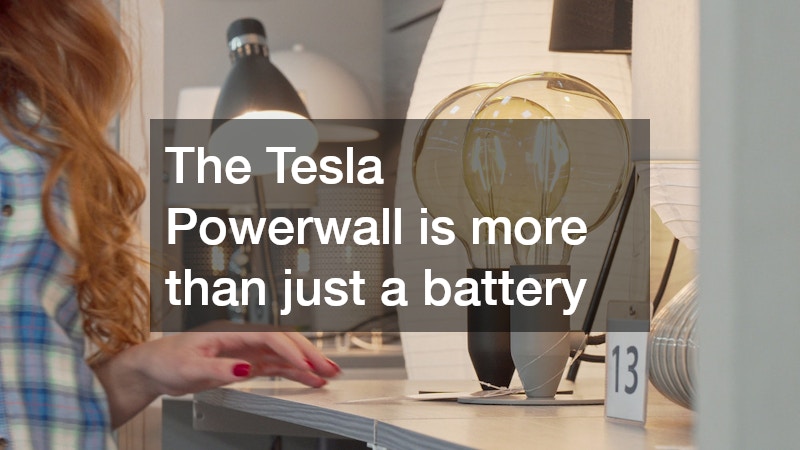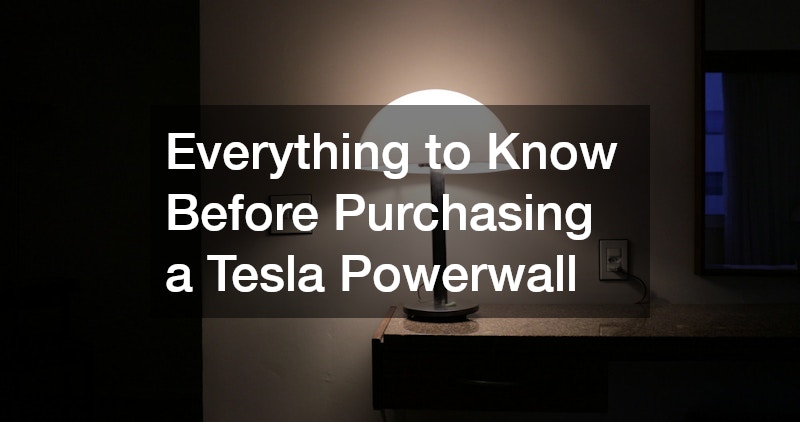In recent years, home energy storage systems have moved from niche technology to mainstream solutions for homeowners seeking energy independence, cost savings, and sustainability. Among these systems, the Tesla Powerwall has emerged as one of the most popular options. If you’re considering adding a Powerwall to your home, it’s crucial to understand how it works, what it costs, and whether it’s the right fit for your lifestyle. This guide will walk you through everything you need to know before making this investment.
What is a Powerwall?
The Tesla Powerwall is a rechargeable lithium-ion battery designed for residential use. Its primary function is to store electricity generated by solar panels or from the grid during off-peak hours.
Homeowners can then use this stored energy during peak hours, power outages, or when electricity prices are high. Unlike traditional backup generators, the Powerwall is silent, low-maintenance, and integrates seamlessly into modern homes.
Key features include:
-
Energy Storage: Each Powerwall stores 13.5 kWh of energy, enough to power the average home for a day during typical consumption.
-
Scalability: You can install multiple Powerwalls in a single home to increase capacity.
-
Backup Power: During an outage, your Powerwall can automatically supply electricity to your home.
-
Integration with Solar: It pairs perfectly with solar panels, storing excess energy for nighttime use.
-
Smart Management: Tesla’s app lets you monitor energy usage, control charging times, and optimize energy savings.
Why Consider a Powerwall?
There are several compelling reasons to invest in a Tesla Powerwall:
-
Energy Independence: A Powerwall reduces reliance on the grid, allowing homeowners to use stored energy during peak periods or outages.
-
Cost Savings: Depending on your local electricity rates, a Powerwall can lower your energy bills by storing cheaper energy and reducing demand charges.
-
Environmental Impact: Using stored solar energy decreases your carbon footprint and reliance on fossil fuels.
-
Home Resilience: Power outages are increasingly common due to weather events or grid instability. A Powerwall ensures essential appliances stay running.
Factors to Consider Before Purchasing
While a Tesla Powerwall is an attractive option, it’s important to evaluate whether it meets your specific needs. Here are the key considerations:
Energy Needs
Before installing a Powerwall, assess your household energy consumption. Review your electricity bills to determine average daily usage. A single Powerwall provides 13.5 kWh, which may be sufficient for a small to medium home, but larger households or those with high energy demands may require multiple units.
Solar Integration
The Powerwall works best in combination with solar panels. If your home doesn’t already have solar, you’ll need to factor in the additional cost of installation. A solar-powered system maximizes the Powerwall’s potential by storing excess energy during the day for nighttime use.
Cost
The upfront cost of a Powerwall is significant. As of 2025, a single Powerwall, including installation, can cost between $11,000 and $16,000. Additional units increase the price, and regional installation costs can vary. It’s important to weigh these costs against potential long-term energy savings.
Incentives and Rebates
Many regions offer tax credits, rebates, or other incentives for installing home battery systems. The federal Investment Tax Credit (ITC) currently provides a significant tax credit for solar-plus-storage systems. Be sure to research local and state programs to reduce the financial burden.
Home Infrastructure
A Tesla Powerwall requires sufficient space and proper electrical infrastructure for installation. Typically, it is mounted on a wall inside a garage or outdoors. Your home’s electrical panel must be compatible with the system, and installation should be performed by a certified Tesla installer.
Making the Decision
Deciding whether to invest in a Tesla Powerwall comes down to your energy goals, budget, and home infrastructure. Here’s a simple checklist to help guide your decision:
-
Do you want energy independence and backup power?
-
Do you have or plan to install solar panels?
-
Can you afford the upfront cost and installation?
-
Are you in a region with frequent outages or high electricity rates?
-
Have you researched available incentives and rebates?
If the answers lean toward “yes,” a Tesla Powerwall can be a transformative addition to your home, providing peace of mind, energy savings, and sustainability.
The Tesla Powerwall is more than just a battery—it’s a tool for modern homeowners looking to take control of their energy use. From reducing electricity bills to ensuring backup power during outages, it offers tangible benefits. However, the decision to purchase should not be taken lightly. Evaluating your energy needs, budget, home infrastructure, and long-term goals is essential.
With careful planning and a clear understanding of its capabilities, a Tesla Powerwall can turn your home into a resilient, energy-efficient powerhouse. Investing in one today is not just about saving money—it’s about future-proofing your home for a sustainable tomorrow.

